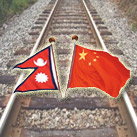Troubled Waters, Anniversary Parade, PLA’s Power Projection: Is China a Concern for the World?
This paper seeks to discuss three important issues concerning China today. The first part analyses the controversial South China Sea dispute that has gained prominence over time, especially after incidents like Bowditch or Impeccable. China’s military build-up in the South China Sea does not necessarily indicate that Beijing will use force to occupy more islands; rather, it seems that China seeks to enhance its military presence to manipulate its bargaining game for future negotiations.
- Nalanda Roy
- April 2012












